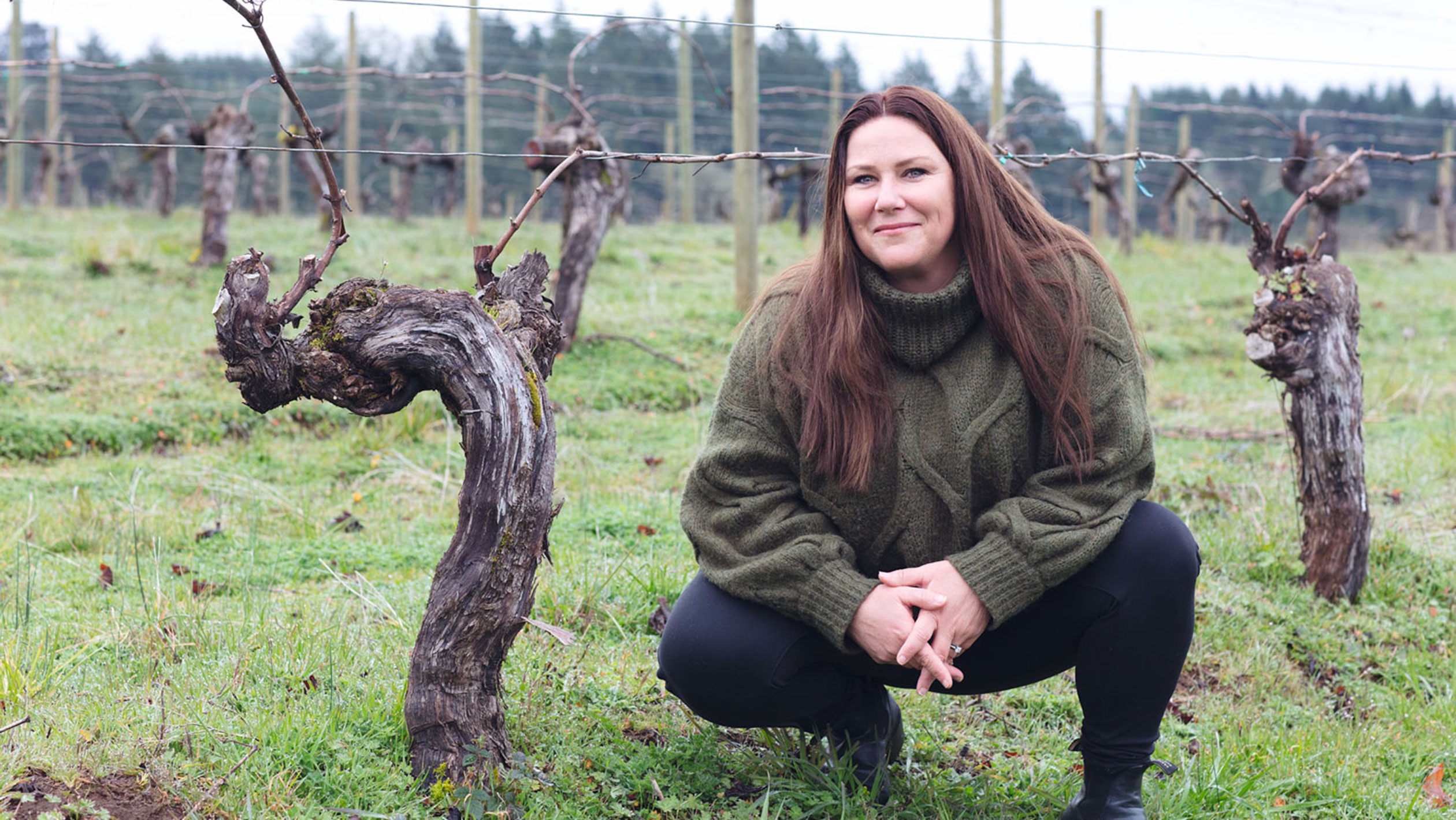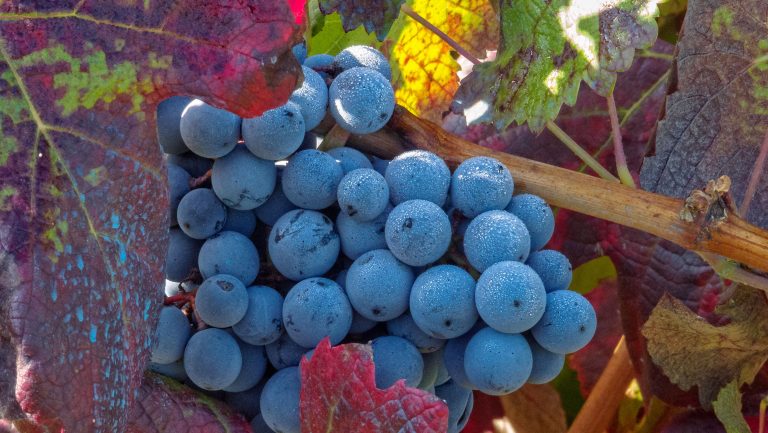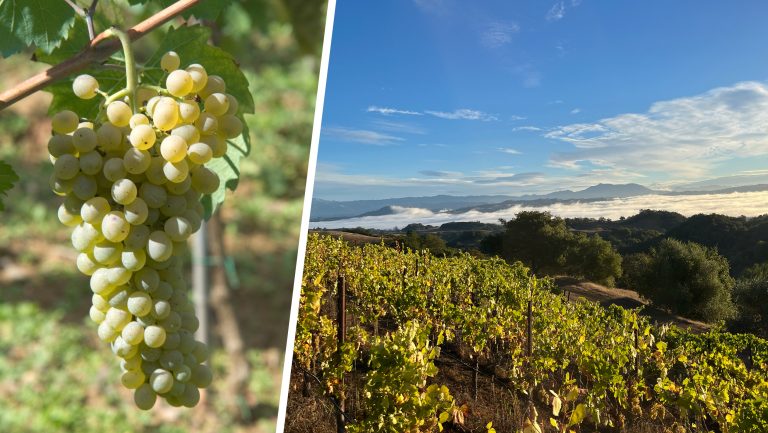After years of playing second fiddle to better-known Iberian exports like Albariño and Tempranillo, Mencía is finally gaining broader recognition on the world stage. As new approaches to winemaking catapult Spanish Mencía into a higher league with consumers, sommeliers are also leaning into the grape for their wine programs.
Mencía’s origins remain a mystery, but it’s most likely native to Spain or northern Portugal, where it’s known as Jaen. Originally a grape that produced bulk wine, it first gained international recognition at the end of the 20th century. Today, it’s the star grape of Spain’s Bierzo and Ribeira Sacra DOs, with close to 8,000 hectares planted. Although Mencía isn’t quite a household name, the United States is its number one importer from both Bierzo and Ribeira Sacra, followed by Germany, Canada, and the UK.
Spanish Producers Seek Quality
The path to get here wasn’t easy. Forty years ago, a typical bottle of Mencía was pale, acidic, and easily brushed off as a quaffable, unserious wine. That changed in the 1990s when pioneering winemakers like Alvaro Palacios in Bierzo and Fernando González and Pedro Rodríguez in Ribeira Sacra began to turn Mencía’s fortunes around. In Palacios’ case, success came from recovering abandoned vineyards planted with old vines, and the use of modernized winemaking. In Ribeira Sacra, winemakers slowly recovered a patchwork of plots on steep hillsides overlooking the Miño and Sil rivers, experimenting with different farming and winemaking techniques until they were satisfied.

Don’t miss the latest drinks industry news and insights. Sign up for our award-winning newsletters and get insider intel, resources, and trends delivered to your inbox every week.
“The improvement we’ve seen with Mencía in the last 30 years has been immense,” says Fabio González, the winemaker at Adega Algueira. “We’ve had to rethink the way we do things, but when it all comes together, the quality and potential of Mencía goes up enormously.” For example, until 2001, almost no one was barrel aging wine in Ribeira Sacra—a practice that’s now commonplace, González points out. His father Fernando, who began making Mencía in 1980, attributes the grape’s success to a simpler reason: growers have learned how to work with “great terroir that creates spectacular grapes.”
Fernando González emphasizes Mencía’s ability to transmit terroir. Although both are made with Mencía, “my wines have nothing to do with my friend Raúl Pérez’s wines from Bierzo,” he says. Sommeliers agree: “Mencia runs the gamut,” says Erin Rickenbaker, the co-owner of San Francisco’s El Chato. “It makes a lighter wine from one spot, a fuller wine from another spot … it’s completely different depending on where the sun is shining.”
Mencía Migrates Stateside
The Mencía revolution has quietly grown over the past decade as more U.S.-based buyers discover higher-end, terroir-driven wines. Even for seasoned wine pros, Mencía can come as a revelation. “It was like nothing I had ever tasted,” says Rickenbaker. “You want to compare it to Pinot Noir, or maybe Cabernet Franc, but you really can’t.”
Along with its unique profile, sommeliers love Mencía for its versatility and its ease of pairing. “Mencía’s high acidity is perfect for Spanish food like hard aged cheeses and mushrooms,” says Jessica Salyer, the restaurant and wine program manager at Cúrate in Asheville, North Carolina. Salyer also emphasizes Mencía’s ability to convey differences in terroir between neighboring regions: Mencía from Ribeira Sacra mimics Gamay for its freshness and acidity, while Bierzo’s Mencía is more akin to peppery, fuller-bodied Petite Sirah.
As consumers across the country get to know Mencía, some U.S. winemakers are also experimenting with domestic plantings. Oregon’s Analemma Wines was the first U.S. winery to bottle Mencía in 2017. Not long after, other winemakers like Limited Addition’s Bree Stock and Phelan Farm’s Rajat Parr began to experiment with their own cuttings of the grape.

American winemakers especially prize Mencía for its freshness. “Combined with its naturally high pH, picking it with lower alcohol gives it freshness and keeps it in a very drinkable, expressive style,” says Stock. Analemma winemaker Steven Thompson agrees: “If you pick early, it has some nice herbaceous notes and lightness, but if you leave it hanging it still maintains its integrity.”
A Grape of the Future
Growers are exploring Mencía’s ability to withstand unpredictable weather as climate change wreaks havoc with global weather patterns. Its thick skin and relatively loose clusters means it can withstand rainstorms, and its late budding protects it from early frosts that can be fatal to other varieties. González notes that harvests are happening earlier and earlier, but later pruning combined with Mencía’s short growth cycle can help to put ripening on track for the end of summer and retain its characteristic freshness.
Sommeliers agree that Mencía has a promising future as changing tastes have sent many wine consumers in search of new grapes. Rickenbaker and Salyer both find that their customers increasingly choose lighter reds like Mencía over wines from Rioja or Ribera del Duero. Differences between winemaking regions and price points mean Mencía also appeals to a broad range of palates—and wallets. “Mencía from Ribeira Sacra has sharper edges to it,” says Parr. “But I think sommeliers will always understand Bierzo much more easily because it has less of that austere backbone than Ribeira Sacra.” Consumers looking to branch out even more can try Mencía’s Portuguese alter-ego, says importer Lewis Kopman of Grossberg/Kopman Selections. “If you want a prettier, juicier version of Mencía that is still capable of aging fantastically, Jaen is a great alternative.” Pricewise, the fact that Mencía—especially Mencía from Bierzo—often retails at an accessible price point has helped its growth, notes Parr.
Perhaps most importantly, the rise of Mencía represents a willingness on the part of consumers to broaden their horizons. “Nobody knew anything about Spanish wine in Asheville when we opened in 2011,” says Salyler. “I do think people are starting to recognize the grape more.”

Dispatch
Sign up for our award-winning newsletter
Don’t miss the latest drinks industry news and insights—delivered to your inbox every week.







